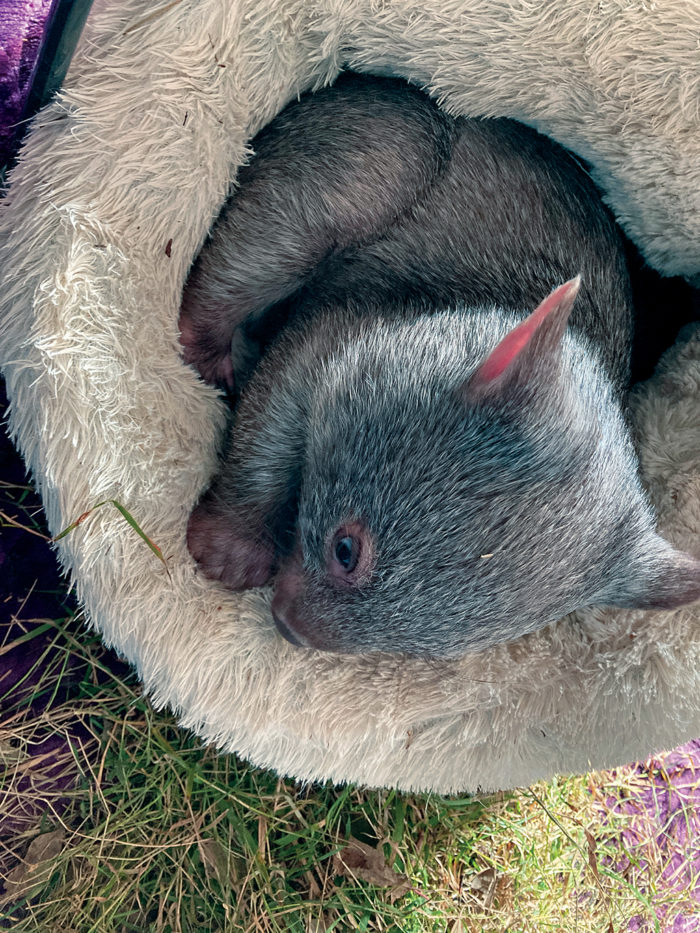
Diary of a wombat warrior
Australia’s only specialty wombat hospital is a not-for-profit organisation that runs
on the kindness of others and the time, expertise, and love of one dedicated woman.
With a friendly smile and happy countenance, Roz Holme looks like your everyday 60-year-old grandmother. But she’s not. She’s actually a superhero in disguise. As a little girl growing up in the country, Roz was constantly making sick and injured birds and animals better. Then when she grew up, and purchased a property with husband Kevin, Roz discovered her real superpowers. Not just an ability to heal native animals, but a particular drive and passion for wombats.
It’s the Common or Bare-nosed species that especially concern her, as they’re facing steady decline through loss of habitat, road hazards, and a parasitic mite (Vombatus ursinus). According to the Wombat Protection Society of Australia, “The mange mite buries itself under the wombat’s skin triggering extreme itchiness, which makes the wombat scratch, causing open wounds and scabs to form. These become infected, the wombat loses condition, becomes dehydrated, malnourished and slowly dies.
“We’ve been caring for wombats for about 40 years,” Roz says, tickling two of her current patients while they play on the hospital lino floor. “The main reason is that we came across all these sick ones on our property and the vets weren’t interested, no-one was interested in anything mangey or adult… so we started treating mange, we just loved making things better.”
At the time, little was known about this parasite so Roz had to work it out herself. “I contacted a lot of people, but no-one knew much about it. Now of course it’s different, everyone knows how to treat it, everyone knows what it is, and I’ve worked on three mange papers since then.” One of these papers was with Scott Carver, a Senior Lecturer in Wildlife Ecology at University of Tasmania.
Roz has found that babies have a better chance of bouncing back from the disease than adults and, sadly, that once a wombat’s organs start to shut down the only humane option is to euthanase. Even though she works with wombats who have mange, she is just as dedicated to healing wombats with other illnesses or injuries and is often called out to rescue babies whose mothers have been shot or animals that have been hit by a car.
Read more in the Spring issue of Hunter & Coastal Lifestyle Magazine or subscribe here.
Story and photography by Megan Hazlett



